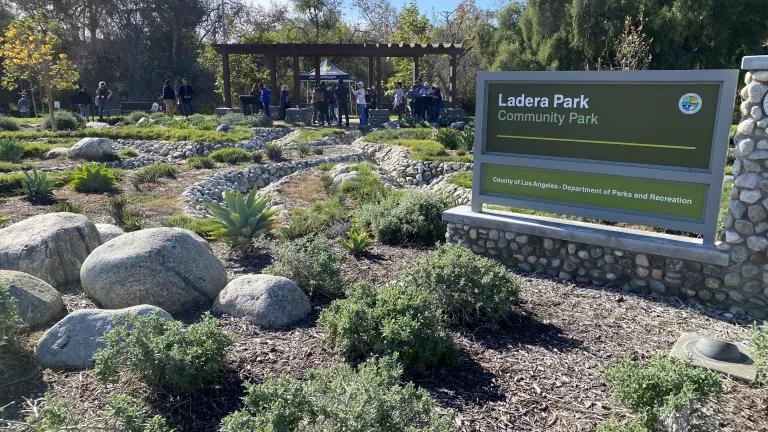Local Water Reliability Act Boosts CA Coastal Water Supplies
California's SB 332 also helps protect native wildlife
NRDC is sponsoring legislation this year by Senator Hertzberg and Senator Wiener (SB 332, the Local Water Reliability Act) designed to help sustain water reliability and protect the environment.
Every year, more than 400 billion gallons of water (enough to submerge one million football fields under a foot of water) are diverted from California’s rivers, streams, and groundwater aquifers, transported sometimes hundreds of miles, used once, treated at a wastewater plant, and then dumped into the ocean. That’s a huge waste of a renewable resource, and a practice that over decades has caused significant ecological harms.
SB 332 would require California’s coastal communities to reduce the volume of wastewater discharged to the ocean and bays over the next 20 years. The bill challenges water supply agencies and wastewater treatment plant operators to undertake a joint effort to plan and implement a conservation and discharge reduction strategy that reduces wasteful and polluting discharges to the ocean by 95% in 20 years. Water agencies will be able to comply with this requirement by reducing indoor water use or recycling water through advanced treatment, like Orange County does already.
Increased water recycling can substantially improve water supply reliability for local communities. After all, recycled water is a drought resistant supply of water, and it is an increasingly cost-effective water supply option. Moreover, according to California’s Fourth Climate Change Assessment, the water supply from snowpack in the State is expected to decline by two-thirds.
Reducing the volume of wastewater discharged to the ocean, and reusing it in the local community, can also have environmental benefits that extend across the entire state. For instance, about one third of the water used in Southern California, and most of the water used in the Bay Area, is diverted from rivers in California’s Bay-Delta watershed, where unsustainable water diversions threaten salmon runs, other native fish and wildlife, and thousands of fishing jobs that depend on healthy rivers. In some cases, as much as 80 to 90 percent of the water that would flow down these rivers is diverted, causing a massive ecological shift that has put salmon on the brink of extinction across a state where salmon were once bountiful. Increased water recycling is one tool to help communities respond to reduced diversions from the Bay-Delta, which are needed to protect and restore our state’s salmon fishery and the environment.
California has adopted goals for expanding water recycling, but we are lagging far behind meeting these goals. SB 332 would help ensure that we get back on track to meet or exceed these goals for water recycling. In addition, Governor Newsom recently called for taking a “portfolio” approach to managing the State’s water challenges, and SB 332 is an important element of a successful portfolio.
SB 332 provides a tool to ensure water supply reliability for communities across the state, while also helping to increase flows in our rivers and streams. Retaining and returning flows to the State’s rivers is essential to restoring the Delta, as well as the State’s once-thriving populations of salmon and steelhead. Reusing water in coastal communities can ensure that less water is pumped from the Delta, dammed in reservoirs, and diverted from our rivers.



